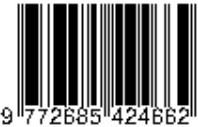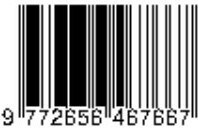Mengukur Penerimaan Aplikasi Transportasi Online Menggunakan Model UTAUT 2
Abstract
The online transportation app Maxim has become a new competitor in Indonesia's industry. This study uses the UTAUT 2 model to measure the Maxim app's acceptance in Gorontalo Province. The survey was conducted among 387 respondents, with most users being teenagers and having used the app for over a year. Data were analyzed using the Partial Least Squares Structural Equation Modeling (PLS-SEM) approach. Measurement model analysis showed good validity and reliability. The results of the structural model analysis revealed that effort expectancy, hedonic motivation, price value, habit, and behavioral intention significantly affected the acceptance and use of the Maxim application. While performance expectancy, social influence, and facilitating conditions are not significant. On the other hand, the experience variable as a moderator does not prove significant. These findings provide practical implications for Maxim service providers to focus on ease of use, entertainment value, competitive price offerings, and building positive habits to increase user acceptance and loyalty in Gorontalo Province.
Aplikasi Maxim telah menjadi fenomena di industri transportasi online di Indonesia. Penelitian ini mengukur penerimaan aplikasi Maxim di Provinsi Gorontalo menggunakan model UTAUT 2. Survei dilakukan terhadap 387 responden, dengan mayoritas pengguna berusia remaja dan telah menggunakan aplikasi lebih dari satu tahun. Data dianalisis dengan pendekatan Partial Least Squares Structural Equation Modeling (PLS-SEM). Analisis model pengukuran menunjukkan validitas dan reliabilitas yang baik. Hasil analisis model struktural mengungkapkan bahwa effort expectancy, hedonic motivation, price value, habit, dan behavioral intention terbukti berpengaruh signifikan terhadap penerimaan dan penggunaan aplikasi Maxim. Sementara performance expectancy, social influence, dan facilitating condition tidak signifikan. Di sisi lain variabel experience sebagai variabel moderator tidak terbukti signifikan. Temuan ini memberikan implikasi praktis bagi penyedia layanan Maxim untuk berfokus pada aspek kemudahan penggunaan, nilai hiburan, penawaran harga kompetitif, dan membangun kebiasaan positif untuk meningkatkan penerimaan dan loyalitas pengguna di Provinsi Gorontalo.
Keywords
Full Text:
PDFReferences
Apriliani, A., Budhiluhoer, M., Jamaludin, A., dan Prihandani, K. (2020). Systematic literature review kepuasan pelanggan terhadap jasa transportasi online. Systematics. 2(1). 12-20.
Ariandi, M., & Marsolina, D. (2023). Analisis kepuasan driver terhadap aplikasi Maxim menggunakan metode End User Computing Satisfaction (EUCS). JURIKOM (Jurnal Riset Komputer), 10(2), 412-426. https://doi.org/10.30865/jurikom.v10i2.5819
Candra, S., Valtin, E. I., & Agustine, R. T. (2019). E-service quality of online transportation in Indonesia: A preliminary finding. 2019 7th International Conference on Cyber and IT Service Management (CITSM), 1-6. https://doi.org/10.1109/CITSM47753.2019.8965343
Christian, M., Jasfar, F., & Hady, H. (2021). Investigating the determinants of app-based land transportation user loyalty in Jakarta using PLS-SEM framework. Advanced Journal of Social Science, 8(1), 25-36. https://doi.org/10.21467/ajss.8.1.25-36
Dwivedi, Y.K., Rana, N.P., Jeyaraj, A., Clement, M, dan Williams, M.D. (2019). Re-examining the Unified Theory of Acceptance and Use of Technology (UTAUT): Towards a Revised Theoretical Model. Information System Frontiers, 21(3), 719-734.
Fatihah, A. N., tiowati, S., & Wardhanie, A. P. (2020). Analisis penerimaan aplikasi transportasi online GoRide dan GraBike menggunakan metode UTAUT di Kota Surabaya. Jurnal Sistem Informasi dan Komputer Akuntansi, 9(1), 104-112.
Hair, J. F., Black, W. C., Babin, B. J., dan Anderson, R. E. (2010). Multivariate data analysis, 6th ed., New Jersey, USA: Prentice Hall
Hair, J. F., Risher, J. J., Sarstedt, M., dan Ringle, C. M. (2019). When to use and how to report the results of PLS-SEM. European Business Review, 31(1), 2-24.
Hakim, G. M. (2023). Analisis faktor yang mempengaruhi minat penggunaan aplikasi indrive menggunakan model UTAUT2. Journal of Information Technology and Computer Science (INTECOMS), 6(1), 353-362.
Herina, N., Alawiah, M., Wahidin, M., & B.K, F. A. S. (2024). Analisis penerimaan pengguna aplikasi transportasi online Goride menggunakan metode UTAUT2. Jurnal Interkom: Jurnal Publikasi Ilmiah Bidang Teknologi Informasi dan Komunikasi, 18(4), 9-16. https://doi.org/10.35969/interkom.v18i4.319
Lemeshow, S. (1997). Besar sampel dalam penelitian kesehatan. Yogyakarta: Gadjah Mada University Press.
Lianto, F., & Dewi, C. (2024). Pengaruh performance expectancy, effort expectancy, social influence, facilitating conditions, hedonic motivation, price value dan habit terhadap customer acceptance (studi pada pengguna layanan Maxim di kota Bandung). JMBI UNSRAT (Jurnal Ilmiah Manajemen Bisnis dan Inovasi Universitas Sam Ratulangi). 11, 330-342. https://doi.org/10.35794/jmbi.v11i1.53523
Mayang, S. A. (2022, October 31). Driver Maxim Gorontalo demo soal suspend sepihak dan kuota ojol. Tribun Gorontalo. https://gorontalo.tribunnews.com/2022/11/01/driver-maxim-gorontalo-demo-soal-suspend-sepihak-dan-kuota-ojol
Nugroho, T. (2020). Analisis faktor-faktor yang mempengaruhi penggunaan aplikasi transportasi daring menggunakan UTAUT2 dan faktor budaya Hofstede. Tesis. Universitas Islam Indonesia. Yogyakarta.
Panto, A. R. A. (2023, February 23). Ini 10 tuntutan aksi unjuk rasa pengemudi Maxim Gorontalo, dari tarif hingga potongan komisi. Tribun Gorontalo. https://gorontalo.tribunnews.com/2023/02/23/ini-10-tuntutan-aksi-unjuk-rasa-pengemudi-maxim-gorontalo-dari-tarif-hingga-potongan-komisi
Rianti, T. (2021). Penerapan model UTAUT 2 (unified theory of acceptance and use of technology 2) untuk mengetahui tingkat penerimaan dan penggunaan aplikasi Maxim ojek online. Studi kasus pada Maxim Kota Palembang. Skripsi. Universitas Sriwijaya. Palembang.
Tsalisa, R. A., Hadi, S. P., & Purbawati, D. (2022). Pengaruh kualitas pelayanan dan harga terhadap kepuasan pelanggan pengguna jasa transportasi online Maxim di Kota Semarang. Jurnal Ilmu Administrasi Bisnis, 11(4), 822-829.
Venkatesh, V., Morris, M. G., Davis, G. B., & Davis, F. D. (2003). User acceptance of information technology: Toward a unified view. MIS Quarterly: Management Information Systems, 27(3), 425-478.
Venkatesh, V., Walton, S. M., Thong, J. Y. L., & Xu, X. (2012). Consumer acceptance and use of information technology: Extending the unified theory of acceptance and use of technology. MIS Quarterly, 36(1), 157-178.
Wibowo, Y., Aprinawati, A., & Indriaty, I. (2024). Preferensi konsumen dalam penggunaan transportasi online Maxim-Bike: Analisis faktor harga dan kualitas pelayanan (studi kasus mahasiswa STIE Dharma Putra Pekanbaru). Niagawan, 13, 55. https://doi.org/10.24114/niaga.v13i1.56561
Wulandari, M. (2022). Analysis of acceptance and use of online transportation on grab and go-jek application for the public using the UTAUT2 model (case study: Bandung). Journal of Social Science, 3, 609-620. https://doi.org/10.46799/jss.v3i3.195
DOI: https://doi.org/10.37905/jji.v6i1.24735
Refbacks
- There are currently no refbacks.
JJIhas been indexed by:

|

|

|

|

|

|

|

|

|
| Editorial Office |
|
Engineering Faculty Building, 1st Floor Jl. Prof. Dr. Ing. B. J. Habibie, Bone Bolango, Gorontalo, 96119, Indonesia. Whatsapp: +6281314270499 Email: [email protected] |

|
|
|












